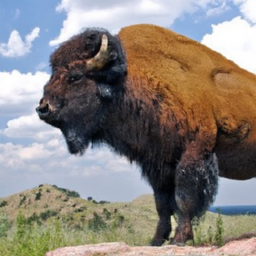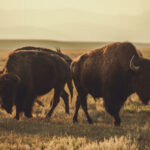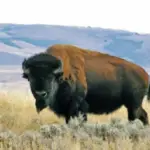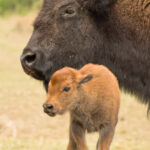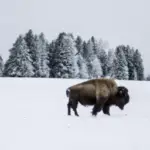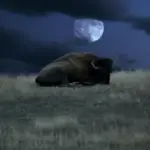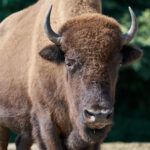Bison Herd in Custer State Park
Custer State Park is home to one of the largest publicly-owned herds of bison in the world. The park’s bison herd is not only a major tourist attraction but also plays a crucial role in maintaining the park’s ecological balance. Comprising over 1,300 individuals, the herd can be observed in their natural habitat, providing visitors with a unique opportunity to witness these magnificent creatures up close.
Impact of Bison on Park Ecosystem
The presence of the bison herd in Custer State Park has a profound impact on the park’s ecosystem. As herbivores, bison contribute to shaping the landscape by selectively grazing on different plant species. Their feeding habits help promote plant diversity and create a mosaic of vegetation types, benefiting various wildlife species. Moreover, their grazing behaviors influence nutrient cycling and soil composition, enhancing the overall health of the park’s ecosystem.
Unique Features of Custer State Park Bison
The bison in Custer State Park exhibit a number of unique features that distinguish them from other herds. Due to the park’s high-quality forage and suitable habitat, the bison have thrived and developed distinct characteristics. They are known for their large size, impressive horn formations, and thick winter coats. This genetic diversity contributes to the overall health and resilience of the herd.
Estimated Number of Bison in Custer State Park
Population Density
Custer State Park is home to a significant number of bison, considering its size. With over 71,000 acres of land, the park provides ample space for the herd to roam and thrive. The population density of bison in the park is carefully managed to ensure that the natural resources can support their needs while maintaining a healthy balance with the ecosystem.
Methods Used to Determine Bison Numbers
Park authorities employ various methods to estimate the number of bison in Custer State Park. These methods include aerial surveys, ground-based counts, and statistical modeling. By combining these techniques, park authorities can accurately approximate the bison population and make informed management decisions.
Effect of Fluctuations on Bison Population
The bison population in Custer State Park experiences natural fluctuations over time. This variation can be influenced by factors such as environmental conditions, availability of food, and reproductive success. Park authorities closely monitor these fluctuations and adjust management strategies accordingly to promote the long-term health and stability of the herd.
Custer State Park Overview
Custer State Park, located in the beautiful Black Hills of South Dakota, is a natural wonderland teeming with diverse wildlife and stunning landscapes. Spanning over 71,000 acres, this expansive park offers visitors a unique opportunity to immerse themselves in nature while learning about its rich history and ecological importance.
History of Custer State Park
The history of Custer State Park dates back to its establishment in 1912, making it the first state park in South Dakota. Named after General George Armstrong Custer, the park was created to protect the region’s unique landscape and wildlife. Over the years, it has transformed into a beloved destination for outdoor enthusiasts and nature lovers.
Geographical Layout
Custer State Park is characterized by its varied topography, which includes rolling hills, towering granite peaks, serene lakes, and meandering streams. The park’s diverse terrain provides a range of habitats for its resident fauna and flora. It is divided into several distinct areas, each offering its own attractions and recreational opportunities.
Park’s Ecological Importance
Beyond its breathtaking scenery, Custer State Park plays a vital role in preserving the region’s ecological balance. The park encompasses prairie grasslands, ponderosa pine forests, and riparian areas, each of which supports a unique array of plant and animal species. It serves as a habitat for numerous endangered and threatened species, making it an important conservation area.
Bison Conservation in Custer State Park
Conservation Initiatives
Custer State Park has implemented a range of conservation initiatives to protect and sustain the bison population within its borders. These initiatives include habitat restoration projects, genetic monitoring, disease prevention measures, and public education programs. By prioritizing the conservation of bison, the park aims to ensure the long-term survival of this iconic species.
Threats to Bison Population
While the bison population in Custer State Park has rebounded in recent years, it still faces various threats. Loss of habitat due to encroaching development, disease outbreaks, and genetic homogeneity are potential challenges that conservationists must address. By staying vigilant and proactively managing these threats, the park authorities strive to mitigate risks and maintain a healthy bison population.
Role of Park Authorities in Bison Conservation
The park authorities play a vital role in the conservation of bison in Custer State Park. They work closely with wildlife biologists, researchers, and local communities to develop and implement conservation strategies. By enforcing regulations, monitoring the herd’s health, and preserving suitable habitat, they ensure the continued existence and well-being of the bison population.
Custer State Park Bison Roundup
Purpose of the Roundup
One of the unique features of Custer State Park is the annual bison roundup. This event serves multiple purposes, including population management, health assessments, and genetic diversification. By gathering the herd into a centralized location, park authorities can carefully monitor and manage the population, ensuring it remains sustainable and in balance with the ecosystem.
How it’s Done
The bison roundup is a highly coordinated event that involves experienced park staff, volunteers, and trained horses. Using a combination of herding techniques and specialized equipment, the bison are guided into corrals. Once safely contained, they undergo health screenings, vaccinations, and genetic sampling to monitor their overall well-being and maintain genetic diversity.
Public Involvement and Effect on Bison Numbers
The bison roundup in Custer State Park attracts a considerable amount of public interest and participation. Visitors have the opportunity to witness this unique spectacle and gain a deeper understanding of the management efforts involved in sustaining the bison population. While the roundup may temporarily impact the bison numbers, its overall effect is crucial for the herd’s long-term health and viability.
Impact of Tourism on Bison in Custer State Park
Estimated Amount of Tourist Interaction with Bison
Custer State Park is a popular tourist destination, attracting visitors from around the world who come to experience its natural beauty and abundant wildlife. As a result, there is a significant amount of tourist interaction with the park’s bison population. Visitors have the opportunity to observe and photograph the bison from a safe distance, respecting the animals’ natural behaviors and habitat.
Safety Measures for Visitors
Park authorities have implemented safety measures to ensure both the visitors and the bison’s well-being. Visitors are educated on maintaining a safe distance from the animals and are reminded not to approach or feed them. By following these guidelines, tourists can enjoy a memorable wildlife encounter while minimizing any potential risks.
Impact of Tourism on Bison Population
Tourism in Custer State Park can have both positive and negative impacts on the bison population. On the positive side, the revenue generated from tourism supports conservation efforts, ensuring the long-term preservation of the bison habitat. However, an excessive influx of visitors can lead to disturbance and stress for the bison. Hence, park authorities carefully manage tourism activities to minimize any adverse effects on the bison and their environment.
Public Engagement in Bison Conservation
Education Programs and Initiatives
Custer State Park recognizes the importance of educating the public about bison conservation. The park offers various education programs and initiatives to increase awareness and understanding of the challenges faced by bison populations. Visitors can participate in guided tours, attend educational presentations, and access informational materials to learn about the ecological importance of bison and their conservation needs.
Local Community Involvement in Conservation
The local community plays a crucial role in bison conservation in Custer State Park. Local residents, including ranchers and landowners, are actively engaged in supporting conservation efforts. Their collaboration with park authorities contributes to the success of initiatives such as habitat protection and genetic diversity management. This strong community involvement fosters a sense of ownership and responsibility towards the long-term sustainability of the bison population.
Tourist Involvement in Bison Conservation
Tourists visiting Custer State Park have the unique opportunity to actively participate in bison conservation efforts. They can do so by respecting park regulations, participating in educational programs, and supporting local conservation initiatives. By spreading awareness, sharing their experiences, and promoting responsible tourism, visitors can contribute to the conservation of bison not only within the park but also on a broader scale.
Do Bison Sleep in Custer State Park?
Do bison sleep in Custer State Park? While bison sleeping habits in general are not well-researched, it is known that bison do sleep, just like any other animal. In Custer State Park, these mighty creatures typically find a comfortable spot to rest, often in the open grasslands or near water sources. Observing the fascinating and natural bison sleeping habits in this picturesque park can be a wonderful experience for visitors.
What is the Connection Between the American Bison on the State Flag and the Population of Bison in Custer State Park?
The state’s flag american bison silhouette represents the strong connection between the population of bison in Custer State Park and the emblematic symbol on South Dakota’s flag. Custer State Park is home to one of the largest publicly-owned bison herds in the world, showcasing the importance of these majestic creatures in the state’s history and conservation efforts.
Future Trends of Bison Population in Custer State Park
Predictions Based on Current Trends
Based on current trends and the successful conservation efforts in Custer State Park, there is optimism for the future of the bison population. The population is expected to remain stable and even grow, thanks to ongoing habitat protection, careful management, and public engagement. This positive outlook underscores the importance of continued conservation efforts and stewardship.
Potential Impacts of Environmental Changes
However, it is important to consider potential impacts of environmental changes on the bison population in Custer State Park. Climate change, habitat degradation, and emerging diseases pose significant challenges. These factors may impact the availability of suitable forage, alter migration patterns, and increase the risk of disease transmission. Vigilance and adaptive management strategies will be vital in mitigating these potential threats and ensuring the resilience of the bison population.
Role of Conservation Efforts in Future Bison Population
Conservation efforts will play a critical role in shaping the future of the bison population in Custer State Park. Continued habitat protection, wildlife management, and public engagement will be key in maintaining a healthy and sustainable population. By addressing emerging challenges and adapting conservation strategies, Custer State Park can serve as a model for successful bison conservation, inspiring similar efforts in other regions. The future of the bison population in Custer State Park looks promising, and with ongoing dedication, these iconic animals will continue to thrive in their natural habitat for generations to come.

